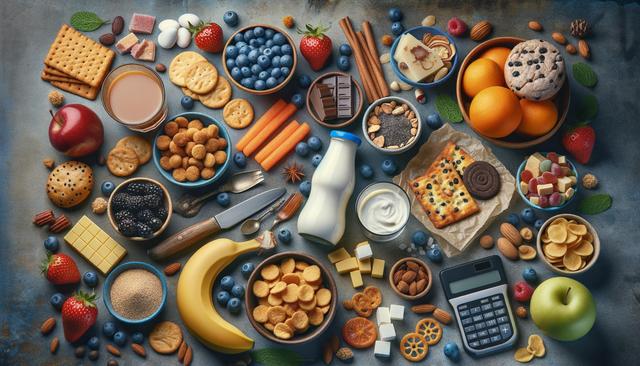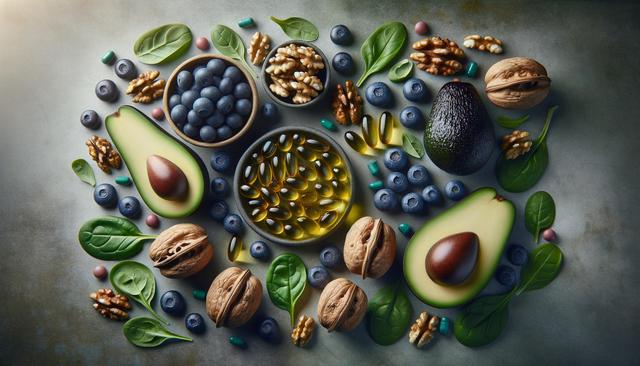Nuts and Seeds: Crunchy, Satisfying, and Blood Sugar Friendly
Nuts and seeds are excellent choices for people managing diabetes. They’re low in carbohydrates and high in healthy fats, protein, and fiber, which help slow glucose absorption and prevent spikes in blood sugar. Almonds, walnuts, chia seeds, and flaxseeds are some of the most well-regarded options. A small handful (about 1 ounce) can be a satisfying snack without overwhelming your carbohydrate intake.
Here are a few nut and seed ideas for snacking:
- Pair a tablespoon of chia seeds with unsweetened almond milk for a mini pudding.
- Sprinkle flaxseeds over plain Greek yogurt for added texture and nutrition.
- Mix almonds and pumpkin seeds for a crunchy trail mix without added sugars.
Keep in mind that while nuts and seeds are nutrient-dense, they’re also calorie-dense. Portion control is key to keeping your snacks in balance. Choose unsalted and unflavored varieties to avoid unnecessary sodium or sugar.
Hard-Boiled Eggs and Low-Fat Cheese: Portable Protein Powerhouses
Protein-rich snacks like hard-boiled eggs and low-fat cheese can be both satisfying and stabilizing for blood sugar levels. Eggs are a particularly good choice since they contain virtually no carbs and are rich in essential nutrients like vitamin D and B12. Low-fat cheese, such as string cheese or cottage cheese, adds calcium and protein while keeping fat content moderate.
These snacks are easy to prepare in advance and take on the go. Some simple ideas include:
- A hard-boiled egg sprinkled with pepper or paprika.
- Low-fat string cheese paired with a few whole grain crackers (in moderation).
- A small bowl of cottage cheese topped with cucumber slices.
These protein-rich options help curb hunger and reduce the urge to reach for high-carb or sugary foods. For those managing diabetes, combining protein with a small amount of complex carbs can help maintain steady blood sugar levels throughout the day.
Vegetable Sticks and Dips: Fresh and Fiber-Filled
Raw vegetables are naturally low in calories and carbohydrates, making them an ideal snack choice. They provide fiber, vitamins, and minerals while having a minimal impact on blood sugar. Crunchy veggies like celery, bell peppers, cucumber, and carrots (in moderation due to their slightly higher carb content) are easy to prep and store.
To make your veggie snacks more enjoyable and filling, consider pairing them with healthy dips. Some diabetes-friendly dip ideas include:
- Hummus made from chickpeas, which adds protein and fiber.
- Guacamole for healthy fats and flavor.
- Greek yogurt-based ranch or tzatziki dip for a creamy texture without too much fat.
These combinations not only taste good but also help you feel full longer. Including a variety of colorful vegetables also ensures a broader intake of antioxidants and nutrients that support overall health.
Whole Grains in Small Portions: Energy with Control
Whole grains contain more fiber than refined grains, making them a smarter choice for people with diabetes. While grains do contain carbohydrates, choosing small portions of high-fiber options can provide slow-releasing energy without causing blood sugar spikes.
For snacking, consider small servings of:
- Air-popped popcorn (about 3 cups as a serving).
- Whole grain crackers with a slice of low-fat cheese.
- Mini whole grain rice cakes with almond butter.
These snacks should be portion-controlled and ideally paired with a source of protein or healthy fat to balance out the carbohydrate content. Look for products labeled as “100% whole grain” and avoid added sugars or sweet flavorings. Reading labels can help ensure you’re picking snacks that align with your dietary needs.
Fruits in Moderation: Natural Sweetness with Nutritional Value
Fruits contain natural sugars, so they should be eaten mindfully. However, they also offer essential vitamins, antioxidants, and dietary fiber. Choosing lower glycemic index fruits and pairing them with protein or fat can make them a suitable snack for people with diabetes.
Some diabetes-friendly fruit options include:
- Berries (strawberries, blueberries, raspberries) – rich in antioxidants and relatively low in sugar.
- Apple slices with peanut butter – the fiber in apples and fat in peanut butter help slow sugar absorption.
- Small portions of melon or kiwi – refreshing and hydrating, with moderate sugar content.
It’s important to avoid fruit juices and dried fruits with added sugars, as these can cause rapid spikes in blood sugar. Fresh, whole fruits in controlled portions offer the most benefits and can satisfy sweet cravings in a healthy way.
Conclusion: Balanced Choices for Sustainable Snacking
Managing diabetes doesn’t mean giving up on snacks — it’s about making thoughtful, balanced choices. By focusing on foods rich in fiber, protein, and healthy fats, you can enjoy a variety of flavors without compromising blood sugar control. From crunchy nuts and creamy dips to fresh vegetables and small portions of fruit, there’s a wide range of diabetes-friendly snacks available. Moderation and portion control remain key, and pairing carbohydrates with protein or fat can help keep energy levels stable. With a bit of planning and attention, snacking can remain a satisfying and health-conscious part of your daily routine.


